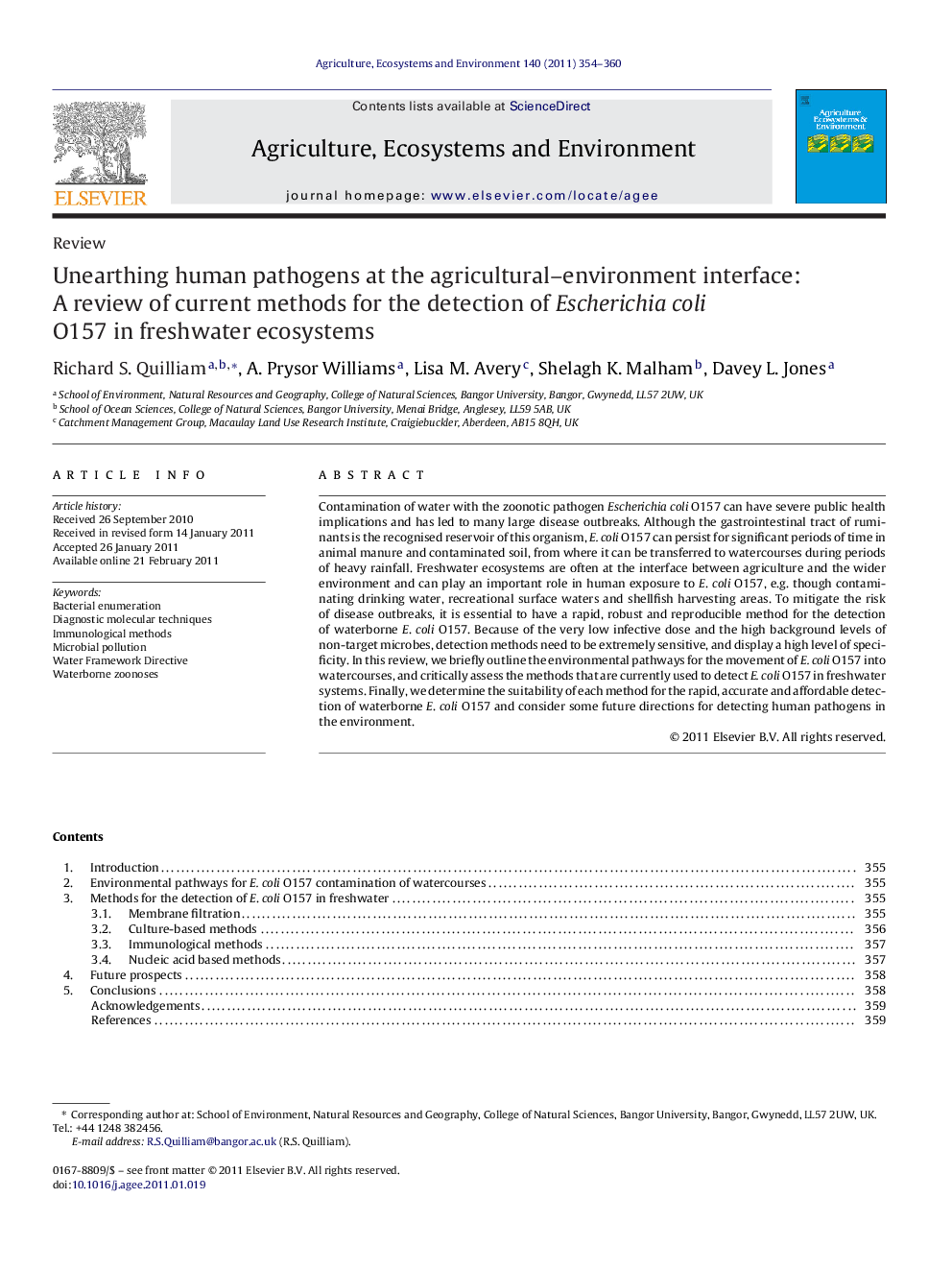| کد مقاله | کد نشریه | سال انتشار | مقاله انگلیسی | نسخه تمام متن |
|---|---|---|---|---|
| 2414724 | 1552110 | 2011 | 7 صفحه PDF | دانلود رایگان |

Contamination of water with the zoonotic pathogen Escherichia coli O157 can have severe public health implications and has led to many large disease outbreaks. Although the gastrointestinal tract of ruminants is the recognised reservoir of this organism, E. coli O157 can persist for significant periods of time in animal manure and contaminated soil, from where it can be transferred to watercourses during periods of heavy rainfall. Freshwater ecosystems are often at the interface between agriculture and the wider environment and can play an important role in human exposure to E. coli O157, e.g. though contaminating drinking water, recreational surface waters and shellfish harvesting areas. To mitigate the risk of disease outbreaks, it is essential to have a rapid, robust and reproducible method for the detection of waterborne E. coli O157. Because of the very low infective dose and the high background levels of non-target microbes, detection methods need to be extremely sensitive, and display a high level of specificity. In this review, we briefly outline the environmental pathways for the movement of E. coli O157 into watercourses, and critically assess the methods that are currently used to detect E. coli O157 in freshwater systems. Finally, we determine the suitability of each method for the rapid, accurate and affordable detection of waterborne E. coli O157 and consider some future directions for detecting human pathogens in the environment.
Research highlights
► Contamination of water with Escherichia coil O157 can have severe public health implications.
► Transfer from agricultural environments to watercourses occurs during heavy rainfall.
► Methods of detection need to be rapid, sensitive, specific and affordable.
► There is no single, reproducible method for the detection of waterborne Escherichia coli O157.
► We critically assess all of the methods currently used to detect E. coli O157 in freshwater.
Journal: Agriculture, Ecosystems & Environment - Volume 140, Issues 3–4, March 2011, Pages 354–360